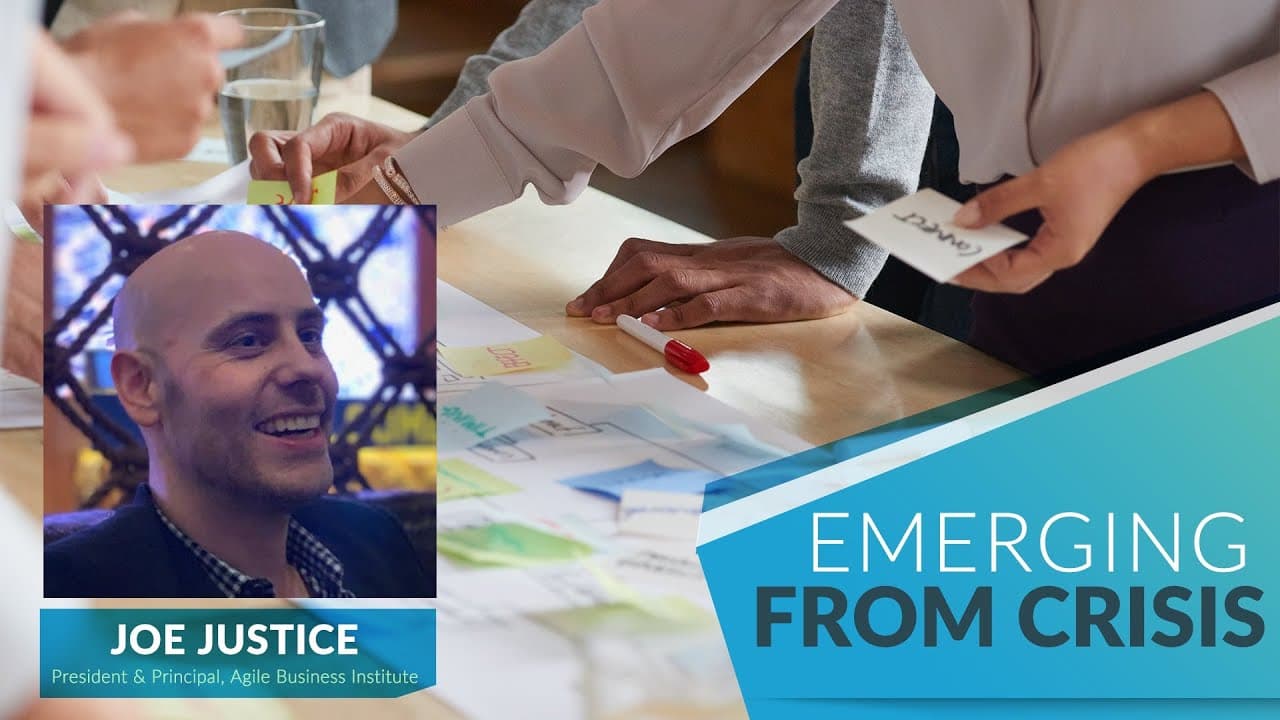Joe Justice: Hi, I'm Joe Justice. Welcome to Executive Agile and Digital Transformation. I'm at one of the most famous racetracks in the United States—Willow Springs Raceway. Right now, I'm inside a race car and outside the factory site in progress for Team WIKISPEED. Team WIKISPEED is building our next mega factory here at the racetrack.
We found that co-locating production with tests provides the fastest feedback loop. And for race cars, you want a racetrack—so for me, this is heaven! I'm Joe Justice, author of The Scrum Hardware Guide, Chair of the Agile Business Institute, and the creator of the Extreme Manufacturing methods.
Today, I'd like to talk about opportunities that executive teams have embraced at Bosch, Toyota, Siemens, and other companies while leading their agile transformations.
Speed of Execution in Agile Leadership
Here’s the context: these are actual quotations from the CEOs of major companies.
- Volkmar Denner, CEO of Bosch: “For Bosch, agility is crucial. It allows us to adjust to the increasing speed of change around us. Agility allows us to remain in a position as an innovation leader.”
- Akio Toyoda, CEO of Toyota: “When you look at a product, going to the actual sites—going to the gemba (the place where work actually happens)—is important. It fuels the change.”
- Herbert Diess, CEO of Volkswagen: “The big question is, are we fast enough? If we continue at our current speed, it is going to be very tough. Speed of execution is the top priority.”
- Elon Musk, CEO of Tesla: “Pace of innovation is all that matters in the long run.”
A common theme emerges: speed of execution is the key to success. These executives recognize that agility and rapid change are critical in today’s business world.
The Impact of COVID-19
Then COVID-19 happened, and these companies faced massive financial disruptions:
- Volkswagen reported a 15-20% drop in sales.
- Geely, which owns Volvo, laid off 1,300 people at the start of the pandemic.
- Ford lost $2 billion in the first quarter alone, blaming the coronavirus.
The result? An accelerated speed of change. Companies had no time for two-year projects. In many automotive companies, a minor model change—such as altering the shape of a bumper—typically takes 2.5 to 4 years. But during COVID-19, we saw companies building new hospitals in three weeks.
Agile Response to Crisis
When companies built hospitals in three weeks, they used the same agile practices that software teams use to release software continuously—sometimes multiple times a day. They employed:
- Small modules with repeatable interfaces
- Test-driven development
- Teams empowered to make their own approvals
For example:
- Ford pivoted its logistics and supply chain to produce personal protective equipment, hospital gowns, face masks, and face shields—within three weeks.
- General Motors switched from assembling car parts to ventilators in three weeks.
- Toyota designed, prototyped, tested, and mass-produced face shields in under three weeks, initially using 3D-printed tools before transitioning to metal tools.
- Tesla leveraged its experience with HVAC systems and SpaceX's life-support technology to design a new ventilator. They improved the state-of-the-art and showcased a working prototype in three weeks.
Agility Enables Faster Results
All these projects had changing requirements, no predefined process, no clear contracts, and no agreed plan. Yet they succeeded at speeds 5,200% faster than business as usual. Why?
I conducted a study across four continents, involving 3,500 professionals from military special forces teams, Fortune 50 companies, and manufacturing firms. The study explored speed differences between working on one project at a time versus juggling multiple projects. Here’s what we found:
- Focusing on one project at a time led to 500% faster completion compared to juggling three projects.
- Even the third project in a sequential workflow finished before the first project in a multitasking environment.
These results closely align with Gerald Weinberg’s contact-switching loss model.
Extreme Manufacturing & Agile Transformation
Paolo Sammicheli, author of Scrum for Hardware, has been helping Italian companies recover from the COVID-19 crisis through executive-led agile transformations. Companies now realize they need small, isolated teams to maintain operations while avoiding company-wide shutdowns due to COVID-19 exposure.
This has led to widespread adoption of:
- Cross-functional teams with T-shaped skills
- Teams prioritizing their own business value
- Teams trained as Scrum Masters and Product Owners to remove their own impediments
The logic follows Conway’s Law (1967), which states that organizations design systems that mirror their own communication structures. Agile companies reverse this with Justice’s Law: the modules of the product define the structure of the organization.
Executive Leadership in Agile Transformations
Agile transformations at top companies have taken different forms:
- Bosch: CEO Volkmar Denner initiated direct coaching, followed by group sessions and hands-on hardware sprints.
- Toyota: Created a separate company, Toyota Research Innovation and Advanced Development (TRI-AD), entirely agile and led by a former Google executive.
- Volkswagen: After a retrospective with top executives, Volkswagen created an agile think tank within the company.
Agility in Manufacturing
Agile manufacturing at scale requires fun and engagement. If the work is exhausting, people will ask to return to traditional methods. But when the process feels like a party, teams want to keep working this way forever.
The fastest example I’ve seen? A new car built in 27 minutes using agile principles.
Final Thoughts & Next Steps
Automation plays a key role in agile transformations. If a task is repeatable, it should be automated. Humans handle creative work while automation accelerates routine tasks.
Here’s what I recommend:
- If you own a business, appoint a board member as a process coach.
- If you're part of a team, ask your process coach where you can gain efficiencies.
- If you're a process coach or Scrum Master, map your business’s value stream and continuously sharpen your skills.
Finally, I invite you to co-author my latest book, The Certified Scrum Master. I want 100 contributors to help refine and enhance it. Sign up at the link below and let’s make it even better.
Let’s go do great Scrum!



